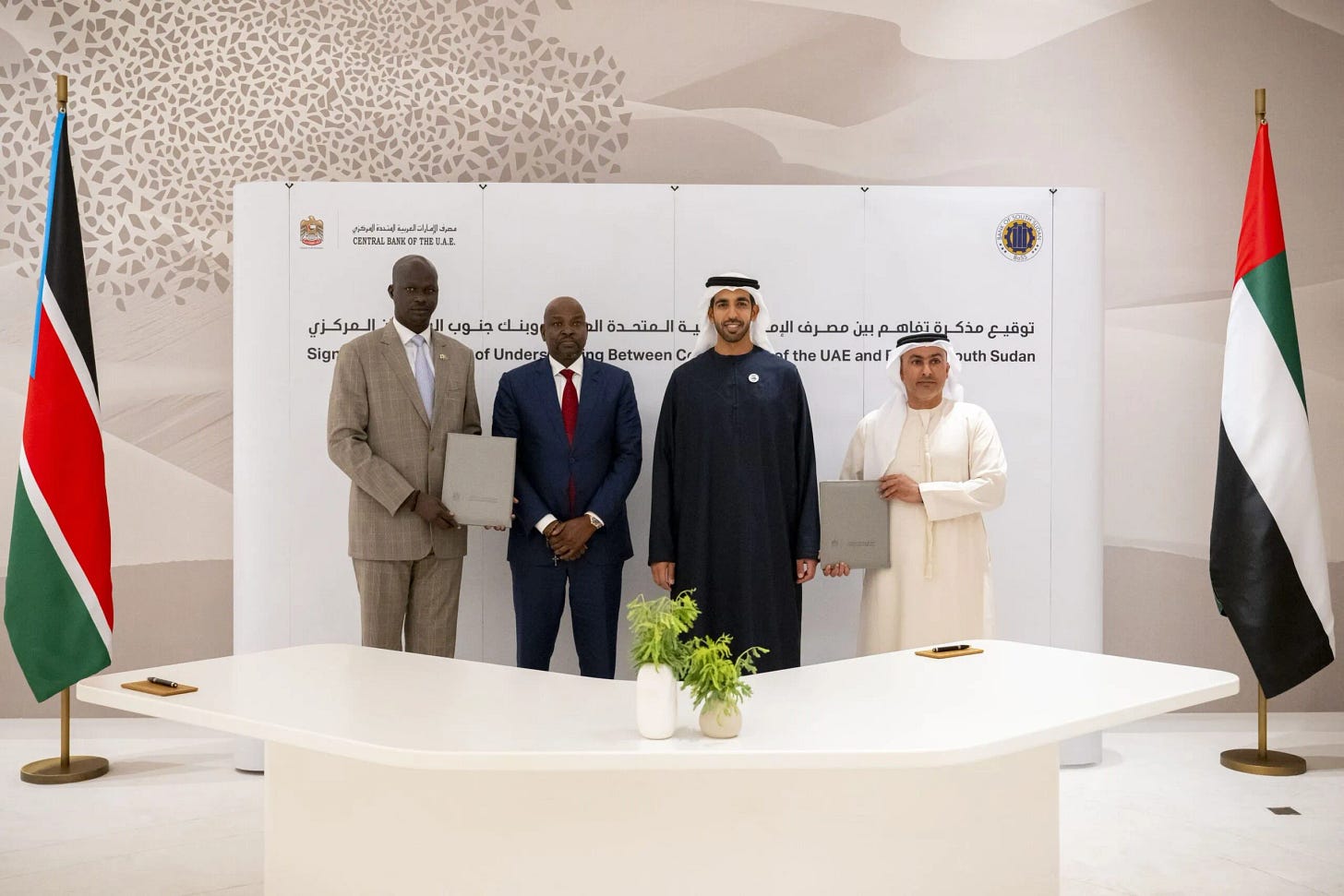UAE Grasps for Leverage in East Africa with South Sudan Banking MoU
Abu Dhabi may be looking to gain transparency over a historic smuggling route.
On 13 August, the Central Bank of the United Arab Emirates and the Bank of South Sudan signed a memorandum of understanding (MoU) encompassing currency printing, payment system development, and technical training. The agreement represents a strategic manoeuvre by the UAE to bolster its economic influence in East Africa: a desperate attempt to gain leverage in a region where Abu Dhabi has faced back-to-back setbacks. Against the backdrop of speculation that South Sudan may accept Gazan refugees, the UAE appears intent on securing visibility over a historic smuggling corridor: one long exploited for both Hamas financing and Sudanese gold.
Through South Sudan, to Sudan
Abu Dhabi’s engagement with South Sudan has developed in parallel with its involvement in Sudan. Although relations with Juba began following South Sudan’s independence, they have deepened in recent years, mirroring the UAE’s entanglement in Sudan’s civil war through its alleged support for the Rapid Support Forces (RSF). Now, with the Sudanese government having regained control of Khartoum and key state institutions, and with Emirati investments elsewhere in the region under strain, Abu Dhabi is seeking to secure leverage over South Sudan.
This push has taken shape through a calculated economic incursion into a country crippled by hyperinflation and reliant on oil revenues. By controlling currency production through Omlat and modernising payment systems via Al Etihad Payments, the UAE is embedding itself within South Sudan’s financial architecture. Such influence over monetary policy and transactional infrastructure reflects Abu Dhabi’s broader strategy of consolidating power in resource-rich yet fragile states, particularly as it grapples with setbacks elsewhere in East Africa.
In Somalia, Emirati influence has waned with the arrival of Starlink, which disrupted its telecommunications ventures. In Sudan, support for the RSF has yielded little beyond stalled projects—such as the $6 billion Abu Amama port—and mounting international backlash, culminating in Sudan’s 2025 ICJ case accusing the UAE of complicity in genocide. Against this backdrop, South Sudan represents a hedge: a fresh opportunity for economic control where other avenues have faltered.
Securing the Smuggling Route
South Sudan’s role as a transit hub for smuggled Sudanese gold—much of which flows to the UAE via RSF-controlled networks—ties the banking deal to broader illicit economies. While the Emirati financial infrastructure could help stabilise South Sudan’s economy, it equally risks facilitating money laundering or smuggling under the guise of legitimate transactions. This is particularly pertinent given South Sudan’s $12 billion oil-backed loan from a Dubai-based firm, which critics argue mortgages future generations. The UAE’s economic penetration, while promising modernisation, may instead deepen South Sudan’s dependency, echoing its precarious debt dynamics.
The rumoured prospect of South Sudan accepting Gazan refugees adds a layer of irony. Historically, Sudan and South Sudan have been conduits for smuggling, including routes linked to Hamas, with the UAE serving as a key destination for illicit gold. Should South Sudan embrace refugees, it would juxtapose humanitarian intent against a backdrop of illicit networks, some enabled by UAE-backed actors such as the RSF. This duality reflects the UAE’s pragmatic yet contradictory regional strategy: championing humanitarian causes while allegedly fuelling instability through proxy support.
As such, the Emirati venture in South Sudan serves as a microcosm of its ambition to offset regional setbacks through economic dominance. Yet it risks entrenching South Sudan’s vulnerabilities while further complicating Abu Dhabi’s position under growing international scrutiny.



